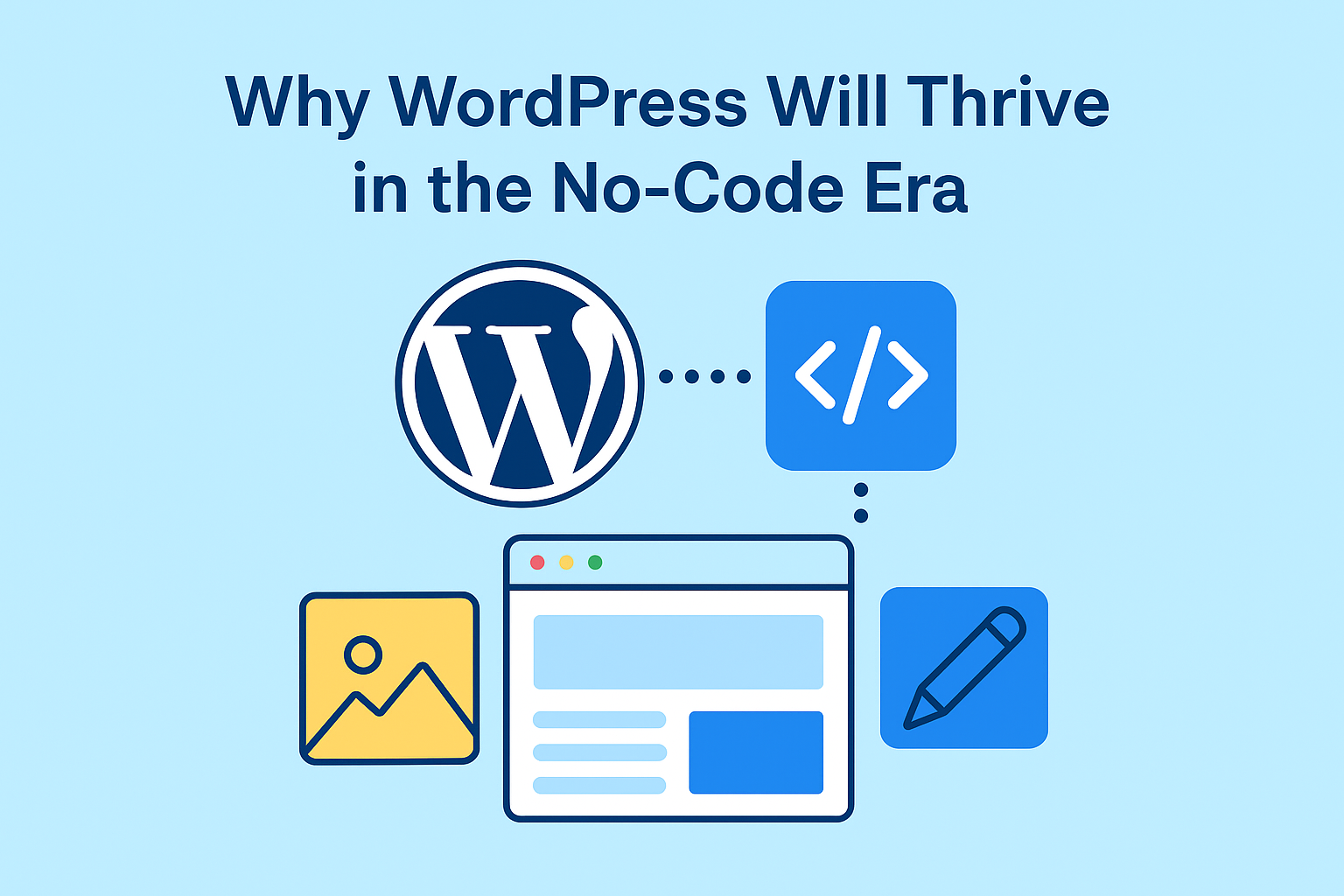Introduction
The rise of no-code tools has revolutionized web development, allowing anyone to create websites, apps, and automations without writing a single line of code. Some developers fear that this trend will replace traditional platforms — but in reality, WordPress is perfectly positioned to thrive in this new era.
Let’s explore why WordPress remains a powerful player in the no-code revolution and how it continues to evolve with modern tools and workflows.
1. WordPress Has Always Been No-Code Friendly
From its very beginning, WordPress was designed to empower users who couldn’t code. Themes, plugins, and the Gutenberg block editor allow anyone to build dynamic, beautiful websites visually.
- No-code builders like Elementor, Divi, and Bricks make design drag-and-drop simple.
- Plugins automate SEO, security, and performance.
- Custom post types and fields (via ACF or Pods) add database-level flexibility without writing PHP.
WordPress was the original no-code platform — long before the term existed.
2. A Massive Ecosystem of Pre-Built Functionality
No-code builders depend on integrations — and WordPress offers over 60,000 plugins that can handle nearly any function imaginable:
- E-commerce with WooCommerce
- Memberships and courses with MemberPress or LearnDash
- Automations with Uncanny Automator or WP Fusion
- AI and chatbots via new plugin integrations
This plugin ecosystem gives no-code creators limitless possibilities — with zero coding.
3. Integration with Modern No-Code Tools
WordPress now connects seamlessly with modern no-code ecosystems like:
- Zapier, Make, and n8n for workflow automation
- Webflow, Airtable, and Notion via APIs
- AI builders like OpenAI or JetFormBuilder AI Blocks
These integrations extend WordPress into a hybrid no-code/low-code powerhouse, bridging content, data, and automation.
4. Open Source = Ultimate Flexibility
Unlike proprietary no-code platforms, WordPress is open source. That means:
- No vendor lock-in
- Full control over your data
- Unlimited scalability and hosting freedom
As other platforms charge per feature or traffic, WordPress remains cost-effective and developer-friendly — making it ideal for startups and agencies alike.
5. WordPress + AI = The Future of No-Code
AI tools are bringing no-code development to the next level. Imagine:
- AI suggesting plugin setups
- ChatGPT writing shortcodes or custom blocks
- AI-driven design systems generating layouts automatically
These advancements enhance WordPress’s usability — not replace it. Tools like Copy.ai and ChatGPT make it easier than ever to build smarter WordPress sites.
Conclusion
Far from being left behind, WordPress is evolving alongside the no-code movement. Its open ecosystem, plugin marketplace, and AI integrations make it the most flexible and future-proof platform for creators, developers, and entrepreneurs alike.
In short: WordPress isn’t competing with no-code tools — it is the no-code tool.
For more guides and tutorials on modern WordPress development, visit Plugintify.com.




